Case Histories (various therapies)
This page refers mostly to back problems (spinal problems), back pain, neck problems and chiropractic treatment, whether in horses, ponies, dogs, cats, donkeys, mules, goats or other species. However, it also refers to the musculo-skeletal system in general.
 All patients, whether treated at the Alternative Vet or at their homes, are examined with a view to chiropractic health and are offered chiropractic manipulation if needed, as part of the holistic approach. If deemed necessary, manipulation is integrated with acupuncture or LASER therapy. Back pain, back problems and neck problems are widespread, whether in horses, dogs, cats or other species, although this is not always recognized to be the case. The result is usually a clear and sometimes massive improvement in well-being.
All patients, whether treated at the Alternative Vet or at their homes, are examined with a view to chiropractic health and are offered chiropractic manipulation if needed, as part of the holistic approach. If deemed necessary, manipulation is integrated with acupuncture or LASER therapy. Back pain, back problems and neck problems are widespread, whether in horses, dogs, cats or other species, although this is not always recognized to be the case. The result is usually a clear and sometimes massive improvement in well-being.
The usual veterinary training unfortunately tends to overlook this large and needful area of veterinary practice. This is very sad, in view of how widespread the problems are and how distressing and disabling back pain can be. It can be a serious welfare issue. As a holistic vet, we cannot neglect this vital area. Animals that have been successfully manipulated demonstrate their relief and pleasure almost immediately, even in cases where the back pain prior to manipulation had not been at all apparent to casual observation. This is a great source of motivation and job satisfaction and his work as a chiropractic vet is perhaps one of the most rewarding aspects of his veterinary treatments.
What is it?
Table of Contents
 The name ‘chiropractic' implies the use of manual therapy (the derivation is from Ancient Greek: χειρος – a hand; πραξις – a doing or transaction). This is a form of manipulation of the musculo-skeletal system, particularly the back (the spine). It differs from osteopathy in the manner of manipulation and in some of the theory and motivation. Chiropractic usually relies on high frequency, low amplitude action and tends to concentrate on bones and their interrelationships. Osteopathy usually relies on low frequency, high amplitude adjustments and tends to concentrate on muscles and ligaments.
The name ‘chiropractic' implies the use of manual therapy (the derivation is from Ancient Greek: χειρος – a hand; πραξις – a doing or transaction). This is a form of manipulation of the musculo-skeletal system, particularly the back (the spine). It differs from osteopathy in the manner of manipulation and in some of the theory and motivation. Chiropractic usually relies on high frequency, low amplitude action and tends to concentrate on bones and their interrelationships. Osteopathy usually relies on low frequency, high amplitude adjustments and tends to concentrate on muscles and ligaments.
The effect of these differences, as a generalisation, is that the movement in chiropractic is almost imperceptible and very fast, whereas in osteopathy, long levering actions may be used by the osteopath. In chiropractic, the action acts as a stimulus to the body to self-correct, it is not imposed upon the body. This makes it a natural bed-fellow of energy medicine. In osteopathy it can be more the therapist who performs the realignment.
Spinal manipulation was used by the Ancient Chinese, probably from about 2,700 BC. Records in English stem from the mid 17th Century. Palmer is credited as the founder of modern chiropractic, in the early 20th Century. Two patients convinced him of the benefits of spinal manipulation, a deaf man and one with heart trouble, both of whom experienced great improvements in their conditions, after manipulation. He worked on both animals and humans.
Since all the organs and tissues of the body receive much of their automatic (autonomic) innervation on a segmental basis, from between the vertebrae, the value of correct spinal alignment for optimum body function and balance (physiology) is clear, quite apart from relief of any pain issues stemming from misalignment. The function of proprioceptive (position sense), motor and sensory nerves can be similarly affected. Organ and muscle function can therefore be deeply affected by misalignments and can be released for proper activity by judicious realignment by chiropractic manipulation.
One-stop assessment for back problems, shoeing problems, saddling problems, natural diet/feeding and medical issues.
Practical Application
“Yippee! 1000% improvement! Different horse completely, Instructor couldn’t believe it when saw him move – on the right hand side of his wither, he used to sweat profusely and now not sweating at all! Will be in touch if he needs manipulation again.”
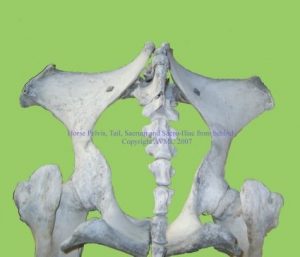 At the AVMC, each patient is given a chiropractic assessment, whether horse, pony, goat, donkey, cow, cat or dog, whether bird, rabbit or snake. This is an integral part of a proper holistic assessment. Many dogs and horses can have a back problem that has gone unnoticed, which can be a source of pain and reduced well-being. Manipulation (chiropractic treatment) is recommended and performed, if there is a need. This procedure in itself can create immediate and dramatic relaxation and pain relief for a patient, often even when ‘owners' had until then been unaware of a problem in the spine or elsewhere in the musculo-skeletal system. The obvious and often immediate positive response of many patients is a delight. Just as in humans, the ‘wear and tear’ of modern life can cause axial skeletal misalignments, the correction of which can be of enormous benefit to the patient. It is mostly horse backs and dog backs on which we have to work, although cat backs also commonly require attention. On the farm, chiropractic can be enormously valuable but it is usually only ‘show' cattle that are presented, thus enhancing their show potential. Back work (back treatment) is a major part of the activity of the AVMC.
At the AVMC, each patient is given a chiropractic assessment, whether horse, pony, goat, donkey, cow, cat or dog, whether bird, rabbit or snake. This is an integral part of a proper holistic assessment. Many dogs and horses can have a back problem that has gone unnoticed, which can be a source of pain and reduced well-being. Manipulation (chiropractic treatment) is recommended and performed, if there is a need. This procedure in itself can create immediate and dramatic relaxation and pain relief for a patient, often even when ‘owners' had until then been unaware of a problem in the spine or elsewhere in the musculo-skeletal system. The obvious and often immediate positive response of many patients is a delight. Just as in humans, the ‘wear and tear’ of modern life can cause axial skeletal misalignments, the correction of which can be of enormous benefit to the patient. It is mostly horse backs and dog backs on which we have to work, although cat backs also commonly require attention. On the farm, chiropractic can be enormously valuable but it is usually only ‘show' cattle that are presented, thus enhancing their show potential. Back work (back treatment) is a major part of the activity of the AVMC.
Myth: Critics of the technique tend to maintain that a practitioner is unable to alter the alignment of bones, particularly in a horse's skeleton. However, this ideological and theoretical position neglects the fact that chiropractic manipulation is not the motive power in itself; it is only the stimulus and guidance to the body's innate corrective capability. Those who doubt the scope of this gentle form of therapy should witness it at work. Good science comes first from observation.
Another myth is that manipulation should never be offered to a dog with IVDD (intervertebral disc disease, disc prolapse). We find that GENTLE and sensitive manipulation is very much required, properly integrated with the other therapies used (e.g. Acupuncture and Homeopathy) if we are to attain rapid healing and a return to more normal lifestyle as quickly as possible. So far, we have never needed to consign a patient to surgery for a disc problem, even when there has been severe paralysis before treatment.
In cats in particular, we have had a significant number of cases of cats ‘below par', with no obvious illness coming up despite extensive diagnostic efforts, only to find that chiropractic manipulation brings an immediate positive change.
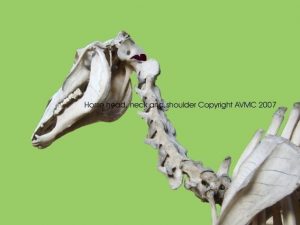 The examination at the AVMC (or at a yard or home visit) includes face, jaw, skull, neck, shoulders, back and pelvis, not forgetting limbs and tail (the face, jaw, skull and tail are often omitted in common chiropractic practice, to the great potential detriment of the patient – in fact, successful spinal alignment and alignment of the rest of the body can sometimes absolutely depend upon correct jaw alignment and action, for instance). Misalignment in any of these areas is likely to cause pain and functional impairment. Correction can relieve pain, enhance quality of life (which is, after all, a vet's main purpose in life) and basic health. In a working horse or dog, correction can, understandably, make a huge difference to performance and, very importantly, reduce the chances of secondary (or compensatory) injury. The limbs and joints may also require attention.
The examination at the AVMC (or at a yard or home visit) includes face, jaw, skull, neck, shoulders, back and pelvis, not forgetting limbs and tail (the face, jaw, skull and tail are often omitted in common chiropractic practice, to the great potential detriment of the patient – in fact, successful spinal alignment and alignment of the rest of the body can sometimes absolutely depend upon correct jaw alignment and action, for instance). Misalignment in any of these areas is likely to cause pain and functional impairment. Correction can relieve pain, enhance quality of life (which is, after all, a vet's main purpose in life) and basic health. In a working horse or dog, correction can, understandably, make a huge difference to performance and, very importantly, reduce the chances of secondary (or compensatory) injury. The limbs and joints may also require attention.
Prime regions for a back problem are the face, the temporo-mandibular joint, the atlanto-occipital joint, the lower neck, the wither, the thoraco-lumbar junction, the lumbo-sacral junction, the sacro-iliac joint and the tail. Shoulder lameness can originate in a lower neck problem, in some cases and can respond to chiropractic treatment. Hind limb lameness can arise from the lumbar spine and can respond to chiropractic manipulation.
Chiropractic Manipulation can be a part of Integrated Pain Management.
Prime indications are: abnormalities of posture, gait, stride, outline, movement, balance, limb resting, bending, power behind, head carriage, ear carriage, behaviour, ability to engage hind limbs, tail swishing and saddling problems.
We also check foot balance and saddling, as an integral part of the holistic approach.
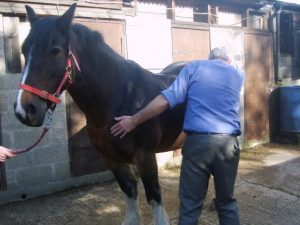
N.B.: We do not sedate patients for manipulation, since we believe it will both alter their response and mask their reaction from us, neither of which is desirable. Sedation also deprives the body of the natural protection of muscle tone and responses, leading to the possibility of muscle, ligament, joint or bone injury. This is quite apart from any risk of toxicity or adverse reaction to the drug used. We find that horses relax so much during treatment that sedation is not even to be considered.
Acupuncture and chiropractic manipulation can be mutually enhancing, so we integrate them at the AVMC, in all cases that receive acupuncture.
Physiotherapy can be very helpful to injured animals or those with back pain. However, at the AVMC we believe that this should only be performed AFTER correction of spinal and skeletal alignment issues. It may even cause more pain, if underlying problems are not corrected beforehand.
Even the independent NHS watchdog, NICE (N.I.C.E. – National Institute for Health and Clinical Excellence), has recognized the potential benefit from acupuncture and manipulation in the relief of human back pain (as of May 2009).
N.B. If using the services of a chiropractor who is not a fully-qualified vet, ensure that the practitioner observes the provisions of the Veterinary Surgeons Act 1966 and preferably use a properly-qualified animal chiropractor. The Veterinary Surgeons Act requires a chiropractor to work at the specific request of and under the guidance or supervision of a veterinary surgeon. They should not attend animals without proper veterinary involvement. Chiropractors are not permitted to prescribe and supply medicines (e.g. homeopathic) for an animal. Beware ‘cowboy' back men. Chiropractors are not permitted to use the adjective ‘veterinary' in connection with their work in the UK (although some do so in an attempt to elevate their status). At the AVMC, chiropractic manipulation is performed by a vet (i.e. veterinary chiropractic manipulation), thus making ideal on-the-spot holistic integration of different therapies possible.
Step 1 – Obtain a proper veterinary assessment and diagnosis. If this includes a full holistic assessment, so much the better.
Step 2 – Your vet is supposed to discuss the full range of treatment options with you. This may include Alternative Therapy and may include chiropractic manipulation. If neither is mentioned, yet you feel that you wish to explore the options, it is recommended that you should discuss the possibilities with your vet at the time of the visit. No vet should obstruct a referral of this nature.
N.B. You will find that your insurance may be invalidated if you use an unqualified practitioner or one who operates outside the Veterinary Surgeons Act 1966 (see above).
In addition, it should be noted that animal therapists (chiropractors, osteopaths and physiotherapists), who are properly trained and qualified, are likely to be members of their respective professional bodies and should be covered by indemnity insurance, as are vets. This protects you, should anything go amiss.
 We have a particular interest in back problems and back treatment in animals, frequently being called upon to treat horse back problems, pony back problems, dog back problems, cat back problems etc., as a significant part of the AVMC's workload. Manipulation, Acupuncture, LASER therapy etc. are employed to seek resolution of such problems, with holistic appraisal of shoeing and saddling in addition, in the case of horses and ponies. These methodologies appear to offer a realistic alternative to the more usual approach of conventional medicine, in which the help of drugs such as NSAIDs or steroid (cortisone) injections may be sought. The chiropractic methods we use involved manual techniques only. We only use a chiropractic adjustment tool (see photograph) extremely infrequently, as we consider it too ‘violent' for general usage. We find it to be invaluable in special but rare circumstances.
We have a particular interest in back problems and back treatment in animals, frequently being called upon to treat horse back problems, pony back problems, dog back problems, cat back problems etc., as a significant part of the AVMC's workload. Manipulation, Acupuncture, LASER therapy etc. are employed to seek resolution of such problems, with holistic appraisal of shoeing and saddling in addition, in the case of horses and ponies. These methodologies appear to offer a realistic alternative to the more usual approach of conventional medicine, in which the help of drugs such as NSAIDs or steroid (cortisone) injections may be sought. The chiropractic methods we use involved manual techniques only. We only use a chiropractic adjustment tool (see photograph) extremely infrequently, as we consider it too ‘violent' for general usage. We find it to be invaluable in special but rare circumstances.
This service is also offered for animals in zoos or circuses – a whimsical personal ambition is to perform this on a giraffe! May be it wouldn't be such a challenge as doing chiropractic on a hedgehog – or even a tortoise? However, despite the massive variation in conformation, it is of interest to note that ALL mammals have just seven cervical vertebrae, from hedgehogs to giraffes, from elephants to gazelles, from mice to humans.
Chiropractic manipulation is a complimentary treatment, in support of medical treatment and may even perform a ‘stand-alone' role in injury or disturbance of the musculo-skeletal system.
Pelvic Misalignment
It is worth making a special note about misalignment of the pelvis. In chiropractic and equine parlance, it is commonly referred to as ‘pelvis out'. In principle, this special note applies to all species.
I am of the belief that what we call pelvic misalignment is actually distortion of the lumbo-sacral joint. The pelvis is ‘fixed' to the sacrum so shows the resultant misalignment. Of course, this fault misaligns the hip joints and all the muscles of the pelvis and hind limb work abnormally as a result. We have seen patella locking (stifle locking) in horses so affected and, in dogs, patella luxation is often more noticeable if the pelvis is not correctly aligned.
The phenomenon of pelvic misalignment also results in uneven pressure coming through to the front legs of a quadruped and to a failure to ‘track' properly. We have seen many cases of horses with recurrent problems in the contra-lateral forelimb that only cease when the pelvis is correctly aligned.
Sometimes, it is impossible to realign the pelvis until the temporo-mandibular joint is in correct alignment and vice versa. This phenomenon clearly shows how the whole body is intricately connected.
I have noticed that posterior (caudal) misalignment is generally more painful for the patient than anterior (cranial) misalignment. I have also observed that a mare will often suffer more severely than a gelding if her pelvis is misaligned.
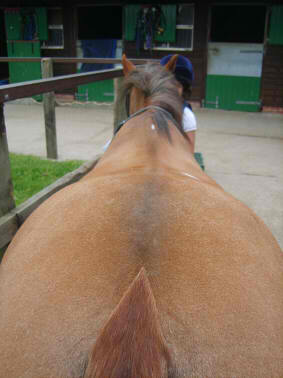
N.B.: Sometimes, we encounter a horse or dog that is constantly requiring realignment of the pelvis. This shows an abnormal instability of the supporting structures. We have developed an injection technique (no drugs) that has appeared to restore natural stability in about 80% of cases. We are happy to discuss this technique and our expectations of it with anyone who has such a horse.
N.B. You will find that your veterinary insurance may be invalidated if you use an unqualified practitioner or one who operates outside the Veterinary Surgeons Act 1966. That Act provides that it is only manipulative therapies that may be performed on your animal by a non-vet. Even then, they must be applied on the specific recommendation of a vet and under his or her supervision. Physiotherapists are not permitted to prescribe and supply medicines (e.g. homeopathic) for an animal. Physiotherapists who might see your animal without having personally been recommended by your vet and without having received a direct and explicit referral and who function without veterinary supervision are operating outside the law.
It should be noted that animal therapists (chiropractors, osteopaths and physiotherapists), who are properly trained and qualified, are likely to be members of their respective professional bodies and should be covered by indemnity insurance, as are vets. This protects you, should anything go amiss. However, this is also likely to be negated if the therapist operates outside the terms of the Veterinary Surgeons Act (above).
As a holistic vet we generally support the use of these therapies and refers appropriate cases for Physiotherapy. We are unable, however, to act as a convenience ‘cover' for those who do not observe the provisions of the Veterinary Surgeons Act. Similar conditions apply for: Osteopathy, Chiropractic, Bowen Therapy, Tellington Touch (TTouch), Massage, Cranial Osteopathy, Craniosacral Therapy and Lymphatic Drainage.
Holistic, Alternative, Natural or complimentary?
| Horse Chiropractic | Dog Chiropractic | Cat Chiropractic |
We regularly visit an area stretching from Wales to London, from Devon to Kent, from South to North Midlands and from Bristol and West Midlands to the Wash and East Anglia, taking in Dorset, Somerset, Hampshire, Wiltshire, Sussex, East Sussex, Surrey, Middlesex, Berkshire, Essex, Suffolk, Norfolk, Gloucestershire, Shropshire, Avon, Worcestershire, Oxfordshire, Leicestershire, Warwickshire, West Midlands, East Midlands, Rutland, Lincolnshire, Cambridgeshire, Bedfordshire, Hertfordshire and Buckinghamshire. We see many patients from London and we visit London homes. We have visited the Isle of Wight. We were also on a recent trip in Jacksonville and found the best chiropractor Jacksonville, FL has to offer. If you are in the area we highly recommend their chiropractic services.
Species on which we have performed chiropractic treatment: horse, pony, dog, cat, donkey, goat, llama, alpaca, cattle (cow, calf), sheep, pig, rabbit, snake, bird, python, ferret. We're waiting for the giraffe!
Veterinary Chiropractic is gentle
Veterinary Chiropractic is well-accepted by patients
Veterinary Chiropractic is suitable for all species
Veterinary Chiropractic is used in all age groups and in pregnancy
Veterinary Chiropractic enhances well being and welfare
Veterinary Chiropractic aids correct posture, movement and physiology
We are willing to refer appropriate cases for Chiropractic treatment. He is unable, however, to act as a convenience ‘cover' for those who do not observe the provisions of the Veterinary Surgeons Act. Similar conditions apply for: Physiotherapy, Osteopathy, Bowen Therapy, Tellington Touch (TTouch), Massage, Cranial Osteopathy, Craniosacral Therapy and Lymphatic Drainage.
